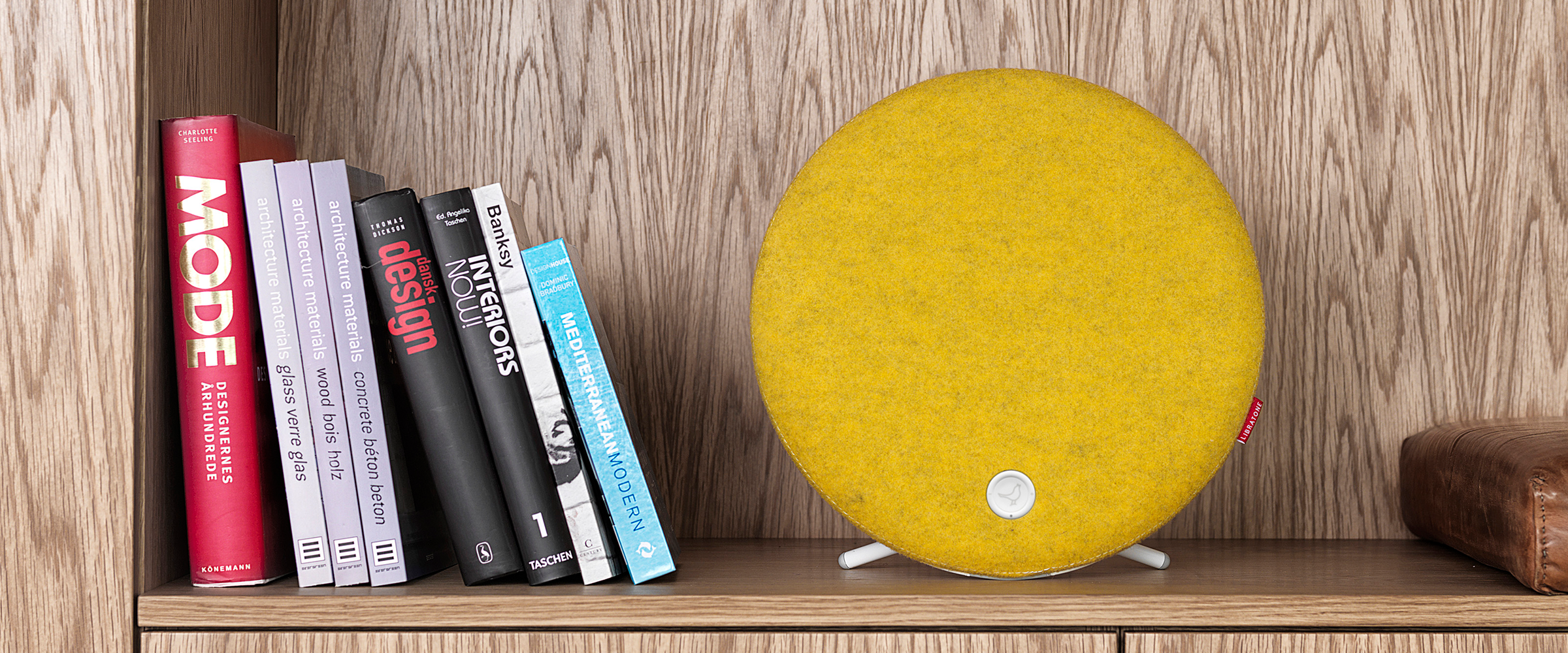Welcome to the Libratone Loop FAQ page! Whether you're a new user or a long-time owner, this resource is designed to provide you with all the essential information you need to operate and troubleshoot your speaker effectively.
Explore the FAQs below to get the most out of your Libratone Loop experience. If you can't find the answer you're looking for, feel free to reach out to our support team for further assistance.
General FAQs
Below are some common questions about our products
Factory Reset
To clear all speaker settings on your Libratone speaker you need to perform a factory reset.
Press the three buttons (the two rear buttons on the back panel and the Logo Button) simultaneously.
Keep the pressure for approx. 3 secs until the Logo Button LED starts blinking WHITE or BLUE.
After approx. 30 seconds the LED will change to WHITE BLINK-PULSE-BLINK SEQUENCE, and
your speaker is now factory reset.
New Setup
Mac computer
- On your Mac, open Wi-Fi
- Select your speaker in "New AirPlay speaker"
- Check that Network is your preferred network and press "Next"
- You will hear an audio cue when setup is done
- Press "Done"
- Your speaker is now connected to your Wi-Fi and ready to be played
iOS (iPhone, iPad)
- On your iOS device, open "Settings" + "Wi-Fi"
- In "Set up new airplay speaker” select your speaker
- Check that Network is your preferred network and press "Next"
- You will hear an audio cue when setup is done
- Press "Done"
- Your speaker is now connected to your Wi-Fi and ready to be played
Android
- On your Android device, open "Settings" + "Wi-Fi"
- Select your speaker
- Open a web browser and enter 192.168.1.1
- Press the menu button up on the right hand side
- Select "Setup"
- Select "Wi-Fi" Network
- Enter "Wi-Fi" Password and press "Apply settings"
- Your speaker is now connected to your Wi-Fi and ready to be played
TOP 3 recommendations if setup still fails
- On Wi-Fi router: Use wireless standard 802.11g (2.4 GHz)
- On Wi-Fi router: Select WPA2 security + AES encryption
- On Wi-Fi router: Avoid all special characters in name
eg. (:-_/*!”?=.æøüé)
Loop BT- Bluetooth connection fails
On rare occasions, connecting to your speaker via Bluetooth fails, and you will need to reestablish pairing between the two devices.
1. Delete existing Libratone Bluetooth pairing
In the Bluetooth menu on your audio source, delete/forget the Libratone Bluetooth pairing and switch Bluetooth off/on.
2. Enable Bluetooth pairing mode
Classic speakers: Enable Bluetooth pairing mode on your speaker by pressing and holding the Bluetooth button for approximately 2 seconds until the Logo Button emits a blue breathe-flash-breathe-flash sequence.
New Zipp and Zipp Mini: Press and hold the Nightingale until the side-by-side blinking setup sequence appears.
3. Pair your audio source and your speaker
In the Bluetooth menu on your audio source, locate your Libratone speaker and tap to pair.
Loop/Loop BT - Logo Button LED signals
Your Libratone Zipp speaker uses the following LED signals in the Status Indicator to show its operating status:
·WHITE BLINK-PULSE-BLINK SEQUENCE(Wi-Fi setup mode. Press Wi-Fi button for 3 seconds to reach this mode)
·WHITE BREATHING(Speaker is Wi-Fi network connected and ready to play)
·WHITE SOLID(Speaker is playing ... AirPlay, DLNA, AUX or USB)
·WHITE BLINK(Speaker is booting)
·BLUE BLINK-PULSE-BLINK SEQUENCE(Bluetooth setup mode. Ready to pair)
·RED PULSE(Wi-Fi connect issue)
Loop - EXTENDED AirPlay requirements
In addition to the basic AirPlay requirements please observe the following extended requirements and our recommendations for setting up your AirPlay speaker:
- Your network router, your Libratone speaker and your audio device (computer or iOS device) must be in close range of each other with strong network signal strength
- Your network router must support the Wireless B/G standard (802.11b/g 2.4 GHz) and this option must be enabled in the router's configuration. Wireless N standard (802.11n - 5 GHz) is not supported
- Avoid using WEP encryption and TKIP security on your Wi-Fi router. We recommend WPA2 encryption + AES security.
- Your Wi-Fi Network Name (SSID) must be visible ("broadcasted") during the setup process. It must not be hidden. Once you've finished setup you may hide the Wi-Fi Network Name (SSID) again.
- The use of special characters or any national characters in your Wi-Fi Network Name (SSID), Wi-Fi Password or Speaker Name is not supported. If you use these characters please replace them with alphanumeric characters only.
- Your iOS device needs to run iOS 7.0 or later and your Mac/PC needs to run iTunes 10.2 or later.
However, Libratone generally recommends to use the latest versions of iOS and iTunes, as Apple is constantly improving AirPlay stability and functionality in newer versions - It is recommended that your Wi-Fi router runs the latest firmware available.
- Libratone recommend an Apple Wi-Fi router for your AirPlay setup. AirPlay is Apple technology!
- Use of Wi-Fi range extenders can result in various AirPlay connect and dropout issues.
Classic Loop BT - If your speaker keeps pulsing RED
The speaker is not connected to a Wi-Fi network router. This problem may have several causes:
· During setup - Wrong Wi-Fi password or illegal (special) characters in Wi-Fi router name (SSID), Wi-Fi password or speaker name. Use only alphanumeric characters.
· During use - Bad connection between Wi-Fi router and speaker. Place your speaker next to your Wi-Fi router and restart the speaker. If the connect issue is solved - use Libratone app to read out Wi-Fi router signal strength on speakers location. To avoid Wi-Fi network connect issues - relocate speaker until signal strength is 60% or above.
· During use - Heavy Wi-Fi traffic can result in a dropped Wi-Fi connection. Change Wi-Fi router "channel" to a lessor used channel. (Consult your Wi-Fi router's manual to learn more about this feature).

